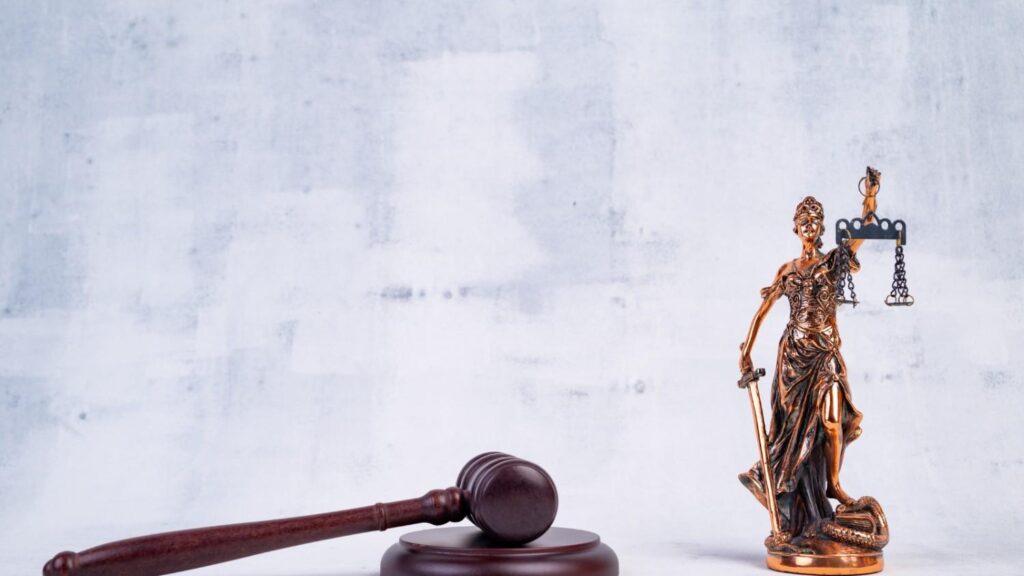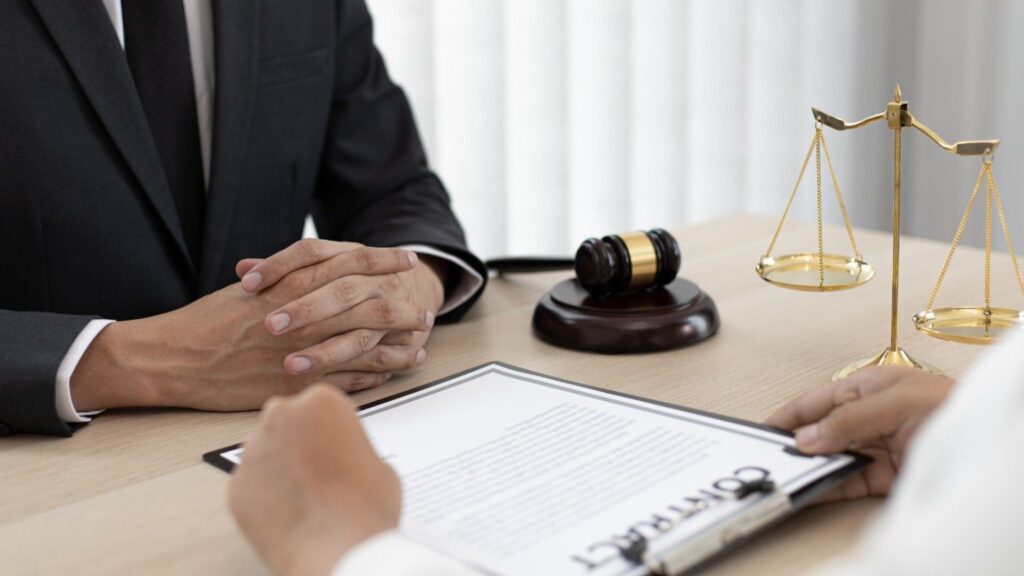
Unresolved disputes can feel overwhelming. Legal battles often leave you uncertain about the next steps, worried about mounting costs, and anxious about the time it might take to resolve the issue. These frustrations can disrupt businesses, damage reputations, and even impact personal well-being. However, understanding what happens when disputes escalate—and how to navigate the litigation timeline—can provide clarity and control over the situation.
In this blog, we’ll explore the key phases of the litigation process and uncover what to expect when conflicts move to the courtroom. From managing deadlines to presenting a strong case, knowing the litigation timeline is essential. With the help of a reliable business litigation attorney, you can tackle these challenges effectively, protect your interests, and work toward a resolution with confidence.
Understanding the Litigation Timeline and Its Critical Role in Dispute Resolution
The litigation timeline is a structured sequence of events that governs how disputes progress through the legal system. It outlines everything from initial filings to the final judgment. Understanding this timeline ensures you’re prepared for each step, minimizing surprises and delays.
The litigation timeline plays a critical role in dispute resolution because it:
- Establishes a framework for resolving conflicts by defining clear steps and deadlines.
- Provides transparency in the legal process, helping all parties understand what to expect.
- Encourages fair resolution by ensuring both sides have opportunities to present evidence.
- Prevents unnecessary delays by adhering to strict procedural requirements.
- Allows for informed decision-making, giving parties time to consider settlements or alternative options.
Knowing this timeline not only helps you navigate the complexities of the legal system but also ensures you’re better equipped to protect your rights and interests.
Key Events and Consequences When Alternative Dispute Resolution Fails
When voluntary negotiation, mediation, or non-binding arbitration cannot resolve a dispute, the matter will often move to litigation. This shift has significant consequences, including prolonged timelines, increased costs, and formal legal procedures. For a clearer understanding, here are the events and consequences that would happen next if a dispute isn’t settled:
Initial Legal Proceedings and Court Filings
Litigation begins with the filing of a complaint or claim depending on the forum or court. The plaintiff submits this document to the court, outlining the details of the dispute, the legal grounds for the claim, and the relief sought. Once the complaint is filed, the defendant is formally served with Complaint and typically some other documents such as a Summons, Civil Case Cover Sheet, alternative dispute resolution procedure information and required to respond within a specified timeframe. This response might involve admitting or denying allegations or filing counterclaims against the plaintiff. Another alternative would be some type of motion to challenge the Complaint or the service of the Complaint as defective in some way.
These initial steps set the tone for the case. A well-drafted complaint and timely response are critical. Any delays or procedural missteps can weaken your position and, in some cases, lead to default judgments, where the court rules in favor of one party due to the other’s failure to act.
The Discovery Process and Evidence Collection Phase
The discovery phase is where both parties gather evidence to support their claims. It’s an intensive process involving document requests, depositions, interrogatories, and expert opinions. Each side works to uncover facts that strengthen their arguments or challenge the other party’s assertions.
This phase can be time-consuming and expensive, but it’s crucial for building a solid case. Effective discovery ensures no surprises during the trial and gives both sides a clear understanding of their positions’ strengths and weaknesses. Proper organization and responsiveness during discovery are essential to maintaining credibility and compliance with court requirements.
Pre-Trial Motions and Preliminary Hearings
Before a trial begins, parties may file pre-trial motions to address specific legal issues or procedural matters. These motions might seek to dismiss the case, exclude certain evidence, or narrow the scope of the trial. Preliminary hearings are also held to clarify these matters and streamline the trial process.
Pre-trial motions can significantly impact the case’s trajectory. For instance, a successful motion to dismiss could resolve the dispute without a trial, saving time and resources. Conversely, unresolved issues at this stage may complicate the trial, requiring more preparation and legal maneuvering.
Trial Proceedings and Judgment Delivery
The trial phase is the culmination of litigation, where both parties present their evidence and arguments before a judge or jury. It begins with opening statements, followed by the witness examinations and evidence, and closing arguments. The goal is to persuade the court of your position and disprove the opposing side’s claims.
Once all arguments are heard, the court delivers a judgment. This decision is binding, though appeals are sometimes possible. Having an experienced business contract attorney is critical at this stage, as their expertise ensures your case is presented effectively and complies with all procedural rules. A well-prepared legal strategy can significantly influence the trial’s outcome.
Essential Steps and Strategies for Navigating the Litigation Process
Successfully navigating litigation requires strategic planning and a proactive approach. By understanding key steps and implementing effective strategies, you can manage the complexities of the process and protect your interests.
Evaluating Your Legal Position and Gathering Documentation
The first step in litigation is assessing the strength of your case. Review the facts, identify legal claims, and determine the desired outcome. Documentation plays a pivotal role in this phase. Collect contracts, emails, financial records, and any other evidence that supports your position.
Work closely with your legal team to evaluate the opposing party’s potential defenses or counterclaims. This preparation helps anticipate challenges and ensures your case is grounded in solid legal and factual arguments. Thorough documentation also builds credibility and demonstrates professionalism.
Selecting and Working with Legal Representation
Choosing the right attorney is one of the most important decisions in litigation. A qualified lawyer provides legal expertise, strategic advice, and representation in court. Look for someone with experience handling cases similar to yours.
Once you’ve selected an attorney, maintain open communication. Provide all necessary information promptly and ensure alignment with your goals. A collaborative relationship with your legal counsel ensures a cohesive strategy and maximizes your chances of a favorable outcome.
Managing Deadlines and Court Requirements
Strict deadlines govern litigation. Missing these deadlines can result in fines, delays, or even dismissal of your case. Staying organized is essential to avoid these pitfalls.
Your Attorney will often give you deadlines to provide information during the case, and following these will make the case easier.
Preparing for Trial and Court Appearances
Preparation is key to presenting a compelling case at trial. Work with your attorney to organize evidence, refine arguments, and rehearse your testimony. Familiarize yourself with courtroom procedures to build confidence and reduce stress. Making sure that your attorney has all key evidence that the evidence has been shared with the other side during the case (not just at trial) is key to success.
During court appearances, professionalism and composure are essential. A skilled business dispute attorney can guide you through this process, ensuring you’re well-prepared to respond to questions and present your case effectively. Their expertise helps navigate unexpected developments, ensuring your rights and interests are protected.
Alternative Paths and Options During Litigation
Litigation doesn’t always have to end with a court trial. Throughout the process, some alternative paths and strategies can save time, reduce costs, and even bring about more agreeable resolutions for all parties involved. Knowing these options allows you to make informed decisions without feeling locked into a rigid process.
Exploring Settlement Opportunities Throughout the Process
Settlements can happen at any stage of litigation, from the early filings to the eve of a trial. These agreements allow both parties to resolve their disputes without enduring the unpredictability of a court ruling. Settlements can be initiated informally or through structured discussions led by legal counsel.
One of the biggest advantages of settling is the control it gives both parties. Unlike a court decision, where the outcome may not satisfy either side fully, settlements allow for compromises that reflect mutual priorities. It also helps avoid the significant costs and stress of a prolonged trial, making it a valuable option to consider.
Mediation and Arbitration as Mid-Litigation Options
Mediation and arbitration are effective alternatives to traditional litigation, particularly in mid-litigation when both parties are more aware of their case’s strengths and weaknesses. Mediation involves a neutral third party facilitating discussions and helping parties reach a voluntary agreement. Arbitration, on the other hand, consists of an arbitrator who listens to both sides and delivers a binding decision.
These methods are generally faster and more cost-effective than a trial. Mediation encourages collaboration and preserves relationships, which is ideal for business disputes. Arbitration, while more formal, offers a streamlined process and confidentiality. Both options allow parties to resolve their differences without relying solely on the courts.
Understanding Appeals and Post-Trial Procedures
Even after a court delivers its judgment, the legal process might not end. Appeals allow the losing party to challenge the decision if they believe legal errors affected the outcome. This phase is less about revisiting evidence and more about analyzing whether the law was applied correctly during the trial.
Post-trial motions, such as requests for a new trial or reduced damages, can also arise. While appeals and post-trial procedures can prolong the litigation timeline, they serve as important checks within the legal system. Consulting with your legal team ensures you understand your rights and options during this stage.
Cost Management Strategies and Financial Planning
Litigation can be expensive, but strategic planning helps manage costs effectively. Working closely with a business attorney with proven case results ensures your resources are used efficiently.
Key Takeaway: Choose the Best Business Attorney
The complexities of litigation highlight the importance of having the right legal partner. A knowledgeable business attorney does more than represent you in court—they provide guidance, anticipate challenges, and create effective strategies tailored to your unique situation. Their experience can mean the difference between a favorable resolution and an extended, costly legal battle.
Choosing the right business attorney ensures you’re equipped to handle every stage of the litigation process, from initial filings to alternative dispute resolution and, if necessary, trial. Their expertise and dedication provide the confidence and clarity needed to navigate the legal system and achieve the best possible outcome for your case.



